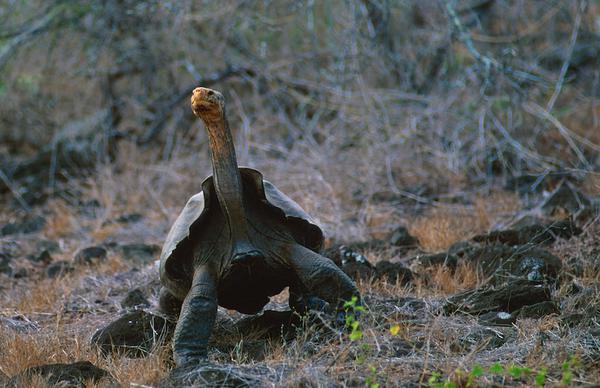- news
- 21-02-2013

The island of Española in the Galápagos archipelago previously hosted a distinct and endemic species of giant tortoise (Chelonoidis hoodensis).
Originally numbering in the thousands, the number of individuals for this species was reduced to just 12 females and 3 males by the late 1960's because of initial decimation by whalers and destruction of habitats by human-introduced goats.
Since 1971, the 15 survivors are bred in captivity at the Galápagos National Park Service headquarters.
Eradication of goats on Española Island was completed in 1978, and nearly two thousands captive-born offspring descended from the 15 survivors have been repatriated in the last 40 years to Española Island. They occupy about one-third of the suitable habitats available to them on the island.
The laboratory of Pr. Milinkovitch has shown through molecular genetic analyses that the individuals repatriated to the island demonstrate substantial and increasing in situ reproduction once again.
Indeed, none of the tortoises sampled on Española in 1994 had hatched on the island versus 3% in 2004 and 24% in 2007.
This recovery occurred despite the parental captive population having a very low genetic diversity due to a combination of unequal reproductive success of the breeders and nonrandom mating in captivity.
These results provide guidelines for adapting breeding regimes in the parental captive population and decreasing inbreeding in the repatriated population.
This new study also indicates that the strongly heterogeneous distribution of tortoise sizes on the island is due to a large variance in the number of animals included in yearly repatriation events performed in the last 40 years.
This study published in the 'Evolutionary Applications' journal reveals that some endangered species can recover dramatically despite a lack of genetic variation and irregular repatriation efforts.
